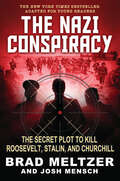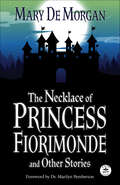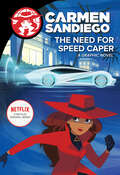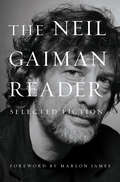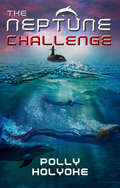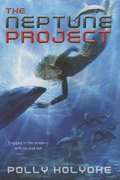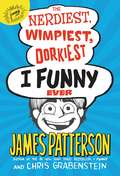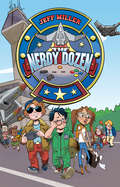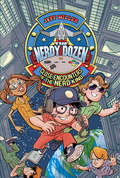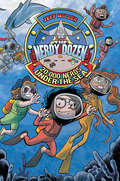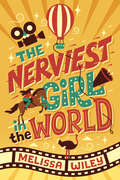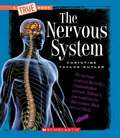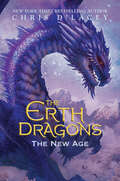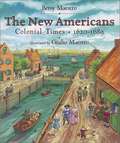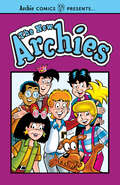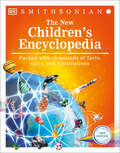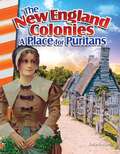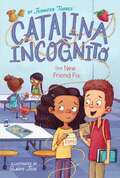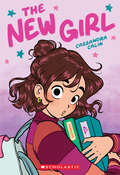- Table View
- List View
The Nazi Conspiracy: The Secret Plot to Kill Roosevelt, Stalin, and Churchill (Young Reader's Edition)
by Brad Meltzer Josh MenschNew York Times bestselling authors Brad Meltzer and Josh Mensch adapt their instant bestseller, The Nazi Conspiracy, for young readers to bring them the heart-pounding story of the assassination plot that nearly changed the course of history.It's 1943. Nazi Germany and its Axis power allies are ravaging Europe and the Pacific with a terrible war. At this juncture, President Franklin Roosevelt has one critical goal: a face-to-face meeting with his allies, Joseph Stalin and Winston Churchill.The first ever meeting of the "Big Three" is set to take place in Tehran, Iran, where the leaders of the three great superpowers will discuss and decide on some of the most crucial strategic details of the war.But when the Nazis learn about the meeting, they form their own secret, deadly plan: an assassination plot that would forever change history...if they're successful.This riveting true story, filled with daring rescues and high stakes intrigue, explains how this pivotal meeting in Tehran changed the course of World War II, and how the Nazi conspiracy to assassinate the Allied leaders nearly led to world-shattering disaster.Renowned authors Brad Meltzer and Josh Mensch bring their New York Times bestseller, The Nazi Conspiracy, to young readers for the first time with this action-packed page-turner that offers an informative overview of World War II and details the heart-pounding true story of the Nazi plot to assassinate Roosevelt, Stalin, and Churchill at the height of World War II.Scholastic Focus is the premier home of thoroughly researched, beautifully written, and thoughtfully designed works of narrative nonfiction aimed at middle-grade and young adult readers. These books help readers learn about the world in which they live and develop their critical thinking skills, so that they may become dynamic citizens who are able to analyze and understand our past, participate in essential discussions about our present, and work to grow and build our future.
The Nebraska Adventure
by Jean A. LukeshThe book is all about Nebraska history with interesting facts on its geography, natural resources, early inhabitants,economics, etc.
The Necklace of Princess Fiorimonde and Other Stories
by Mary De MorganRediscover a Victorian-era collection of fairy tales. Employing sorcery, a wicked princess wears the princes and kings who desire to marry her as crystal beads strung on a gold chain around her neck. A musician searches the world for his missing wife, unaware that elves have transformed her into the golden harp he plays every day. A determined prince embarks on a quest to find the evil fairy who stole the heart of his beloved princess. These are just a few of the inventive and captivating stories in this fine new edition of Mary De Morgan’s fairy tales, The Necklace of Princess Fiorimonde and Other Stories (1880). Despite her fairy tales being well-known and loved during her time, De Morgan has been overlooked by history and largely forgotten. Considered one of the earliest feminist writers, her influential fairy tales often reflected her social and political ideologies, including reform for women. Featuring strong heroines and subverted gender roles, her untraditional stories often eschewed wealth and power, and occasionally ended sadly with no happily-ever-after. Also included in this new edition is the story “Through the Fire” from On a Pincushion (1877), De Morgan’s first published book of fairy tales. Immerse yourself in a young boy’s adventure as he journeys to the North Pole on a mission for the fire Princess. Fans of Hans Christian Anderson and George MacDonald will adore De Morgan’s rediscovered collection of fairy tales. Foreword by Dr. Marilyn Pemberton, Out of the Shadows: The Life and Works of Mary De Morgan (2012).
The Need for Speed Caper (Carmen Sandiego Graphic Novels)
by Clarion BooksAdventure awaits in this full-color graphic novel, based on the Netflix series starring Gina Rodriguez. Take in all the action and excitement of Dubai and get a taste of geography, culture, and history with Carmen Sandiego—the world's greatest thief! Where in the world is Carmen Sandiego? Zooming off to Dubai for her next caper! It's up to Carmen and her crew to stop VILE from stealing a high-speed supercar to use for their evil exploits. But when an old rivalry gets in the way, can Carmen and the gang make a new plan before it's too late? High speeds and high stakes await in the City of Gold!
The Neil Gaiman Reader: Selected Fiction
by Neil GaimanAn outstanding array—52 pieces in all—of selected fiction from the multiple-award-winning, #1 New York Times bestselling author Neil Gaiman, introduced with a foreword by Booker Prize-winning author Marlon JamesSpanning Gaiman’s career to date, The Neil Gaiman Reader: Selected Fiction is a captivating collection from one of the world’s most beloved writers.A brilliant representation of Gaiman's groundbreaking, entrancing, endlessly imaginative fiction, this captivating volume includes excerpts from each of his five novels for adults —Neverwhere, Stardust, American Gods, Anansi Boys, and The Ocean at the End of the Lane—and nearly fifty of his short stories. Impressive in its depth and range, The Neil Gaiman Reader: Selected Fiction is both an entryway to Gaiman’s oeuvre and a literary trove Gaiman readers old and new will return to many times over.
The Nenets: Reindeer Herders of Siberia (Fountas & Pinnell Classroom, Guided Reading)
by Catrina ThomasNIMAC-sourced textbook
The Neptune Challenge (Neptune Project Ser.)
by Polly HolyokeDanger lurks beneath. . . . Genetically engineered to survive in the ocean, Nere and her friends are recovering from their treacherous journey to Safety Harbor, an undersea refuge founded by the scientists of the Neptune Project. But plenty of enemies prowl just outside the colony's boundaries, and when two of the children are kidnapped, Nere, her loyal dolphins, and the other Neptune kids must set out on an expedition even more perilous than their first. Tasked with infiltrating the kidnapper's high-tech undersea base, Nere soon discovers that rescuing the missing Neptune kids isn't all there is to her mission: the secret to saving the world's oceans is hidden somewhere deep inside this vast fortress, and she and her friends will have to risk everything to find it. With bloodthirsty shark mutates and savage kids roaming the corridors, will Nere and her companions find a way to save their friends, themselves, and their underwater world? The stakes couldn't be higher in this thrilling sequel to the award-winning The Neptune Project. Boy and Bear both love to explore the outdoors. There are so many neat things to see, and so many strange things to find. These explorers are prepared for anything . . . except each other! When Bear and Boy meet in the woods, they're scared at first. Really scared. But soon these kings of the wild realize that no mountain is too big to conquer if you have a friend to climb it by your side. Praise for The Neptune Project 2014-2015 Texas Bluebonnet Master List Maryland Black-Eyed Susan Book Award nominee Bank Street Best Children's Books of the Year, 2014 "Holyoke keeps her prose well-pitched to her audience . . . this suspenseful, undersea dystopia should keep middle schoolers hooked." --Kirkus Reviews "The book revels in the beauty of the underwater world and the creatures that inhabit it. The relationship between the teenagers and the dolphins -- who actually become characters themselves-is especially well crafted. The Neptune Project will attract male and female readers." -- VOYA
The Neptune Project
by Polly HolyokeNere feels more at home swimming with the dolphins her mother studies than she does hanging out with her classmates. Nere has never understood why she feels so much more comfortable and confident in water than on land, but everything falls into place when Nere learns that she is one of a group of kids who-unbeknownst to them-have been genetically altered to survive in the ocean. These products of "The Neptune Project" will be able to build a better future under the sea, safe from the barren country's famine, wars, and harsh laws.<P> But there are some very big problems: no one asked Nere if she wanted to be a science experiment, the other Neptune kids aren't exactly the friendliest bunch, and in order to reach the safe haven of the Neptune colony, Nere and her fellow mutates must swim through hundreds of miles of dangerous waters, relying only on their wits, dolphins, and each other to evade terrifying undersea creatures and a government that will stop at nothing to capture the Neptune kids...dead or alive.<P> Fierce battles and daring escapes abound as Nere and her friends race to safety in this action-packed aquatic adventure.
The Nerdiest, Wimpiest, Dorkiest I Funny Ever (I Funny #6)
by James Patterson Chris GrabensteinEverybody's favorite kid comic, Jamie Grimm, is out to conquer the world--with laughter, of course!Comedian Jamie Grimm can't help feeling like he's reached the top--he has his own smash hit TV show and he's won a national funny-kid competition. But now he's taking his fame and fortune to international levels by competing in the upcoming world kid comic contest! Will Jamie prove that he's the funniest kid on earth--or does he stand (or sit!) to lose his crown?
The Nerdy Dozen
by Jeff MillerWhen Neil Andertol and a motley crew of video-gaming whizzes accidentally download top-secret training software and are recruited by the military to restore a botched aircraft mission, they're no longer playing for points--they're playing to save the world! Part action movie, part slapstick comedy, debut author Jeff Miller's Nerdy Dozen is a madcap adventure for the middle grade set.
The Nerdy Dozen #2: Close Encounters of the Nerd Kind
by Jeff MillerIn this exciting sequel to The Nerdy Dozen, Neil Andertol and his gang of dorky gamers are once again called on to fly a top-secret mission--one that is literally out of this world. This time, rescuing mankind means heading into outer space. A top-secret spacecraft has been stolen, and NASA needs the best pilots in the universe to get it back--the Nerdy Dozen. It's a race against time to stop an earth-shattering disaster. Can the twelve geeks save the day again--or will it be game over?
The Nerdy Dozen #3: 20,000 Nerds Under the Sea
by Jeff MillerCan the nerds handle the high seas? It's anchors aweigh for this motley crew of middle grade, video-gaming heroes. In the exciting third book of the Nerdy Dozen series, Neil Andertol and his friends are in for their toughest mission yet!Neil and his crew have reunited at Reboot Robiski's video-game convention in order to try the brand-new underwater game Captain Jolly's Shark Hunt. Except that their win only leads to trouble.Neil, Sam, and Biggs are captured by the real Captain Jolly, who needs their video-game skills so she can destroy the world. As they embark on an underwater adventure, can the Nerdy Dozen save the day before everything is KO'd?
The Nerviest Girl in the World
by Melissa WileyA feisty girl from a family of ranchers lands a job as a daredevil stunt girl in the early days of silent film in this adventurous and funny cross between Wild Hearts Can't Be Broken and Ramona.Pearl lives on a ranch where her chores include collecting eggs and feeding ornery ostriches. She has three older brothers, who don't coddle her at all. And she knows a thing or two about horses, too.One day, Pearl's brothers get cushy jobs doing stunts for this new form of entertainment called "moving pictures." They're the Daredevil Donnelly Brothers, a Death-Defying Cowboy Trio. Before she knows it, Pearl has stumbled into being a stunt girl herself--and dreams of becoming a star. The only problem is, her mother has no idea what she's up to. And let's just say she wouldn't be too happy to find out that Pearl's been jumping out of burning buildings in her spare time.Filled with action, humor, and heart--not to mention those pesky ostriches--The Nerviest Girl in the World introduces a spunky heroine whose adventures will have kids on the edge of their seats and whose sense of humor will have them laughing until the very last line.
The Nervous System (A True Book)
by Christine Taylor-ButlerDid you know that your nerve impulses are 1,000 times SLOWER than your computer? Or that it's normal to fart - as often as 20 times a day? Get the buzz on health and the human body with this fun and fascinating series.
The New Age (The Erth Dragons #3)
by Chris d'LaceyNew York Times bestselling author Chris d'Lacey spins the epic conclusion to his saga of the original clash between humans and dragons.From Erth to the dragon homeworld, Ki:mera, everything has been forever changed by the meeting of dragons and humans. Their fates have become inextricably intertwined -- and their story will transform the very fabric of time.Ren, the human boy, now has unprecedented powers. With his control of a magical horse, his abilities scare even the Wearle's most formidable dragons.Yet the dragons fear the rise of the dark dragon Graven even more, and rumors run rampant that the dragons who came first may have known more than anyone realized. As the implications of the dragons' colonization expand, new creatures are drawn into the conflict, and Gabrial and Grendel will travel beyond the ends of the Erth to save their two young wearlings.In this epic and sweeping third installment of New York Times bestselling author Chris d'Lacey's Erth Dragons trilogy, new powers and new worlds collide in a blazing conclusion.
The New Americans: Colonial Times, 1620-1689
by Giulio Maestro Betsy MaestroThis ongoing series introduces our country's history to young readers in an appealing picture-book format. Clear, simple texts combine with informative, accurate illustrations to help young people develop an understanding of America's past and present. The New Americans is the story of the colonists -- the more than two hundred thousand new Americans -- who came over from Europe and struggled to build a home for themselves in a new world.
The New Archies (Archie Graphic Novels #1)
by Archie SuperstarsTake a trip back in time to Riverdale Middle School with The New Archies! Archie, Betty, Veronica and the whole gang were just as goofy then as they are now as high school students! Can Ms. Grundy keep her class under control? Revisit these fun tales in this graphic novel collection featuring select stories.
The New Ashley (Sleepover Girls)
by Jen JonesAshley's got a passion for fashion, and she's always been the most stylish girl in school — until the arrival of Sophie, a glamorous city girl who's new at school. Sophie and Ashley are instantly inseparable, but the other Sleepover Girls aren't so sure about Sophie. Things get even worse when Sophie convinces Ashley to totally transform her look. When Ashley includes Sophie in one of their weekly sleepovers, an innocent spa party turns into a makeover gone horribly wrong. Can Ashley get her groove back, or is it gone forever? And more importantly, is Sophie worth all the trouble?
The New Big Book of U.S. Presidents 2020 Edition: Fascinating Facts About Each and Every President, Including an American History Timeline
by Running PressUpdated for 2020, readers can easily relive the course of American history through a detailed timeline, more than 50 vivid photographs and illustrations, information about each president's term in office, and the major political issues of each era.
The New Children's Encyclopedia: Packed with thousands of facts, stats, and illustrations
by DKQuench your thirst for knowledge with this comprehensive visual encyclopedia. Packed with pictures and full of facts, this brilliant bestseller is an essential addition to any family library. How did Earth get here? Why does the Sun shine? How does my body work? Why are other countries different? If your head is bursting with questions, you&’ll discover all the answers and much, much more inside. With thematic chapters on Earth, space, natural world, science, technology, and the human body, there is no end to your learning experience. Stunning photography, maps, charts, timelines, diagrams, and invaluable input from experts combine in this exciting landmark reference. Easy navigation enables young readers to dip in and out or read from cover to cover. Clever cross-referencing encourages children to link information, expand their knowledge, and broaden their horizons. The New Children's Encyclopedia takes you on an epic journey of discovery through more than 9,000 indexed entries and 2,500 breathtaking images. With more than a million copies sold already, isn&’t it time you got yours?
The New England Colonies A Place for Puritans - Grades 4-5 - Guided Reading Level O: A Place For Puritans (Social Studies: Informational Text Ser.)
by Kelly RodgersIgnite your students' passion for history through the use of intriguing primary sources! The Primary Source Reader series features purposefully leveled text to increase comprehension for different learner types. Students will learn about the Puritans and the New England colonies through an in-depth exploration of this period of history. This informational text includes captions, a glossary, an index, and other text features that will increase students' reading comprehension.
The New Friend Fix (Catalina Incognito #2)
by Jennifer TorresOne Day at a Time meets Mindy Kim in this second book in a charming new chapter book series about Catalina Castaneda, a Mexican American girl with a magical sewing kit who tries to befriend the new girl at school.Catalina is excited to find out a new student, Esmeralda, has joined her third-grade class at Valle Grande Elementary School. But despite Catalina&’s attempts to introduce herself, Esme won&’t talk to anyone but her own cousin, Jazmín. Could Jazmín be keeping Esme from making new friends? According to Catalina&’s frenemy Pablo, it&’s just like what happened to the secret princess in the telenovela hit The Hidden Crown! With Tía Abuela&’s magical sewing kit, Catalina sets out to create a disguise to unravel the mystery.
The New Girl (Wondergirls #1)
by Jillian BrooksI thought moving to Wonder Lake would be fun. I've already sort of made friends with Amanda, who seems really nice. And my old summer friend, Felicia, lives here, so that should have made things even easier for me. But nobody warned me about Arielle. See, the way it works here is if Arielle likes you, you're in. If she doesn't, you don't have a chance. So, basically, I'm DOOMED. Ages 8-12 RL 4 Check Bookshare for more books in the Wondergirls series.
The New Girl: A Graphic Novel (New Girl Ser.)
by Cassandra CalinInstagram sensation and Tapas webcomic superstar Cassandra Calin makes her long-form debut with this funny, feel-good middle-grade graphic novel about change.Goodbye, old life...Lia and her family are waiting to board a flight across the Atlantic, leaving behind family, friends, and Romania -- the only home Lia has ever known. But Lia's heartache is overshadowed by the discomfort of her first period. As if things weren't difficult enough! Now Lia is thrust into a world where everything is different: her home, her language, and even her body. With so many changes happening at once, Lia struggles with schoolwork, has trouble communicating with classmates, and has no idea how to manage her unpleasant periods. Will she ever feel like herself again?Inspired by the author's own immigration experience, The New Girl is a comically charming story about change and acceptance.
